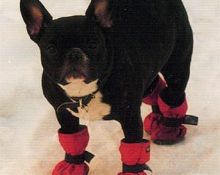To keep your four-legged friend warm in cold weather and to look stylish and impressive, we dress them in special clothes for dogs. Buying such products in a store is expensive, so many dog owners sew clothes with their own hands. It is very difficult to try on a product for fitting - the pet does not stand still, constantly trying to run away and wriggle out.
It’s easier to sew clothes for your pet if you make a dog mannequin with your own hands. This will be a universal product that will help you sew the necessary things perfectly.
Copy of a four-legged friend: necessary measurements
To master sewing a dog dummy, you can take a ready-made pattern from the Internet. However, due to the fact that dogs even of the same breed have discrepancies in size, it is necessary to learn how to take measurements from a dog.
Measurements for the pattern:
- Back length (measure the distance from the root of the tail to the location of the collar);
- At the widest point behind the front paw, measure the volume of the chest;
- In the narrowest place near the hind leg we remove the volume of the abdomen;
- At the widest point, remove the volume of the neck;
- In the middle of the abdomen, from the base of the front paws to the hind paws, the distance between the paws is measured;
- In the widest places (closest to the base) we remove the girths of the front and rear paws;
- Neck length is measured in the middle in front from the line along which the neck volume was measured to the base of the front legs;
- Head volume (if things with a hood or hats will be sewn);
- The length of the paws and the distance between the front and hind paws are measured.
For male dogs, the distance from the front paw to the private part is additionally measured (to make an opening).
Next, we make a pattern. If it doesn’t work out, you can take a similar pattern from a similar breed and correct a number of lines. It should look something like this:
Transferring the pattern to fabric
We transfer the finished pattern of the dog mannequin onto the fabric. Choose knitwear with minimal stretch. Many master class materials recommend using artificial or natural (it will be better, but much more expensive) leather. So, it will be more stable and last longer.
Any person who sews knows that when transferring a pattern, you should leave an additional seam allowance of about 0.5–1 cm. If you are sewing a mannequin for the first time and are unsure of the correctness of the pattern, leave a little more allowance.
We sew the parts of the body with a rough seam and take measurements, comparing them with the control ones. If necessary, additionally sew or, conversely, sew in the details.
Mannequin stuffing
When you are sure that its parts match the control measurements, you can sew them together on a sewing machine.
First we sew the body, then we sew on the paws and head. Leave a small distance along the belly (at the tail) so that you can easily turn the product inside out.
Next, we fill it with soft filler: padding polyester or holofiber.Avoid excessive filling to avoid the formation of lumps and hernias.
The body should be soft, but fairly stable. When placing the dummy on four legs, it should not swing.

We sew on the tail and completely sew up the body with invisible monofilament (similar to fishing line).
Remember, when we sew, accuracy and attentiveness are necessary. Then the mannequin will accurately repeat the silhouette of the pet. And the clothes sewn on it will suit the dog and will not create inconvenience for him when moving.
A copy of a four-legged pet, made according to our master class in bright fabrics, can become an unusual interior decoration.
master class - from expert Olga Ivanova.






 0
0





